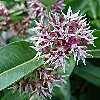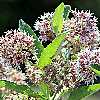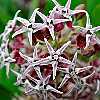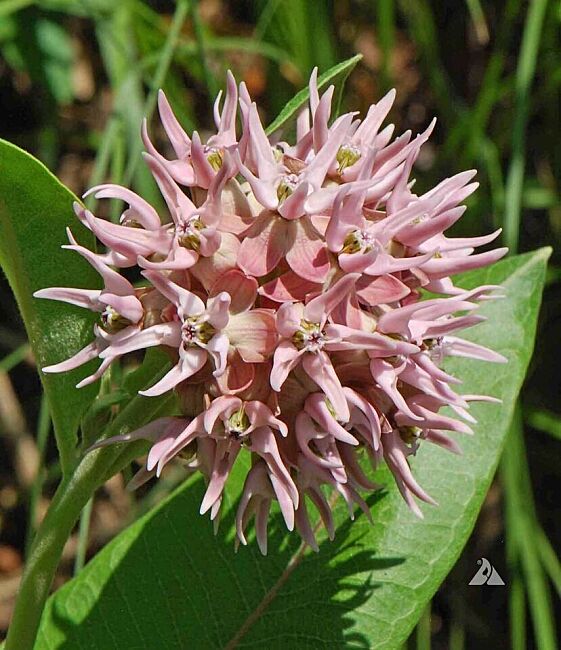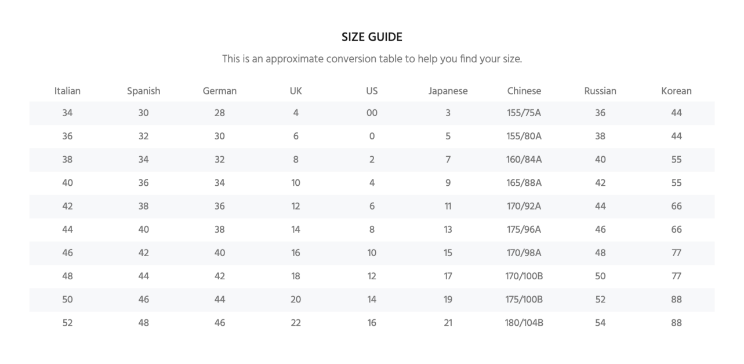Butterfly Milkweed SHOWY MILKWEED Perennial Host Plant Monarch Butterfly 50 Seeds
No Fillers ? Pure Seed ? Non-GMO ? Safe Seed Pledge
PRODUCT DESCRIPTION
Milkweed, Showy: (Asclepias speciosa)
- Showy Milkweed is native to most of the central and western United States.
- It can be found along ditches and roads as well as in moist sites of meadows and fields.
- Plants grow to 40 inches tall and have large, round clusters of pink flowers.
- Showy Milkweed is a host plant for monarchs, and the nectar is utilized by many pollinators.
- Plants are rhizomatous and can spread aggressively. Recommended for pollinator and monarch conservation as well as rain gardens and bioswales.
- Similar to Common Milkweed in looks, Showy Milkweed has soft, pastel pink flower clusters with longer petals.
- This sun-loving asclepias grows well in dry, fast-draining soil and requires little supplemental water once established.
- A prolific and important nectar source for Monarch butterflies, bees, and other beneficial bugs.
- Re-seeds readily. (Asclepias specios)
- Perennial ? blooms appear in the second season and will reappear for many years to come. 48" tall. Showy Milkweed, like all asclepias, is an indispensable plant for Monarch butterflies, offering up the only food source for caterpillars and plenty of nectar for butterflies. A vigorous spreader, plant this low-maintenance variety in an area where it can naturalize and become a haven for local pollinators passing through your garden. Thrives in full sun, fast-draining soil, and doesn?t require supplemental watering once established in your garden. Showy Milkweed requires a cold period in order to germinate and is best planted in the fall or forced into cold stratification for spring seeding.
FAST FACTS
- SCIENTIFIC NAME: Asclepias speciosa
- COLOR(S) : Pink
- SEED TYPE : Perennial
- SUN : Full Sun
- MOISTURE : Moderate, Moist
- HEIGHT (IN.) : 24-40
- BLOOM PERIOD : Summer
- USDA HARDINESS ZONE(S) : 3-9
GROWING & Cold Stratifying MILKWEED
Understanding Milkweed (Asclepias) Seed & Germinating
Germination: To start Milkweed seed we recommend starting inside, but before this happens Milkweed seeds need to go through a cold stratification period. Cold stratification is very important for the germination and growth of Milkweed. It helps break the seeds natural dormancy cycle. To do this, we recommend placing Milkweed seed in a damp paper towel or damp sand in a zip lock bag and place in your fridge for 3 ? 6 weeks (30 days). Place in an area of the fridge, where it won?t get damaged. We taped ours to the bottom of a refrigerator shelf.
Growing Indoors
Planting In Spring: Once the 30 days are complete, it?s time to plant the cold stratified Milkweed (asclepias) seeds. We recommend planting in 2-4? peat pots. Fill peat pots ¾ of the way with seed starting potting soil and gently add water. Water should be able to drain through the peat pots. Once the soil is damp, place 1-2 cold stratified seeds into each pot. To finish, place 1/4 inch of soil on top of the seed.
Planting In Fall: If you're planting Milkweed seed in the fall, let nature do the cold stratification for you! There is no need to place your seeds in the refrigerator before planting, you can plant seeds directly into the soil after there have been a few frosts in your area. This allows for the seeds to remain dormant for the winter and come up in the early spring. Clear away any existing growth and using your index finger to measure, create 1.5" holes for each Milkweed seed. We recommend spacing seeds about 4-6? apart. Place a seed in each hole and cover. Water thoroughly.
Watering: Gently water the planted seed to give additional hydration. The best way to water is from the bottom up. Use a flat pan under the peat pots and add a half inch of water to the bottom of the tray. Don?t over water as it can cause fungus. Water every day or every other day as needed, the best way to test the soil dampness is to touch it. If the soil seems dry then add water; if it?s wet, wait for the soil to dry out to water.
Light Requirements: For the next few weeks, make sure the Milkweed is either in a sunny window, in a green house or under a grow light. Milkweed needs lots of sun and warmth to grow. If you?re using a grow light, make sure to lower the bulb closer to the pots or your seedlings may become leggy, as they stretch to the light. In our experiment, this happened to us. Ideally a sturdier stem is better. Cold stratified seeds should germinate and sprout within 10-15 days once planted. In total Milkweed from the day they are cold stratified to growth can take 40 plus days, so be patient!
Other planting options: Place dry seed (not stratified) in seed starting soil and plant in peat pots under a grow light or in a greenhouse to germinate seeds. The success rate for this is low and more difficult to accomplish. If you choose to use this option it can take months for the seeds to germinate.
If you are planting seed outside, we suggest seeding in late fall, and let the Milkweed seed lay on the ground through winter. Milkweed seed will have a long winter of dormancy, so once the sun comes out and the ground warms in the spring, the seeds will germinate on their own.
Free shipping on all orders in the USA.
Our amazing support team is here to help. Text us at 678 316 0940 and get an instant response
Your Payment is Secure and So is your Purchase. Simply return it within 30 days for an exchange.
Grab a hosting plan for that small business or personal website. Fast Setup, great speeds, low prices. Managed Hosting Too.Text us at 678 316 0940

